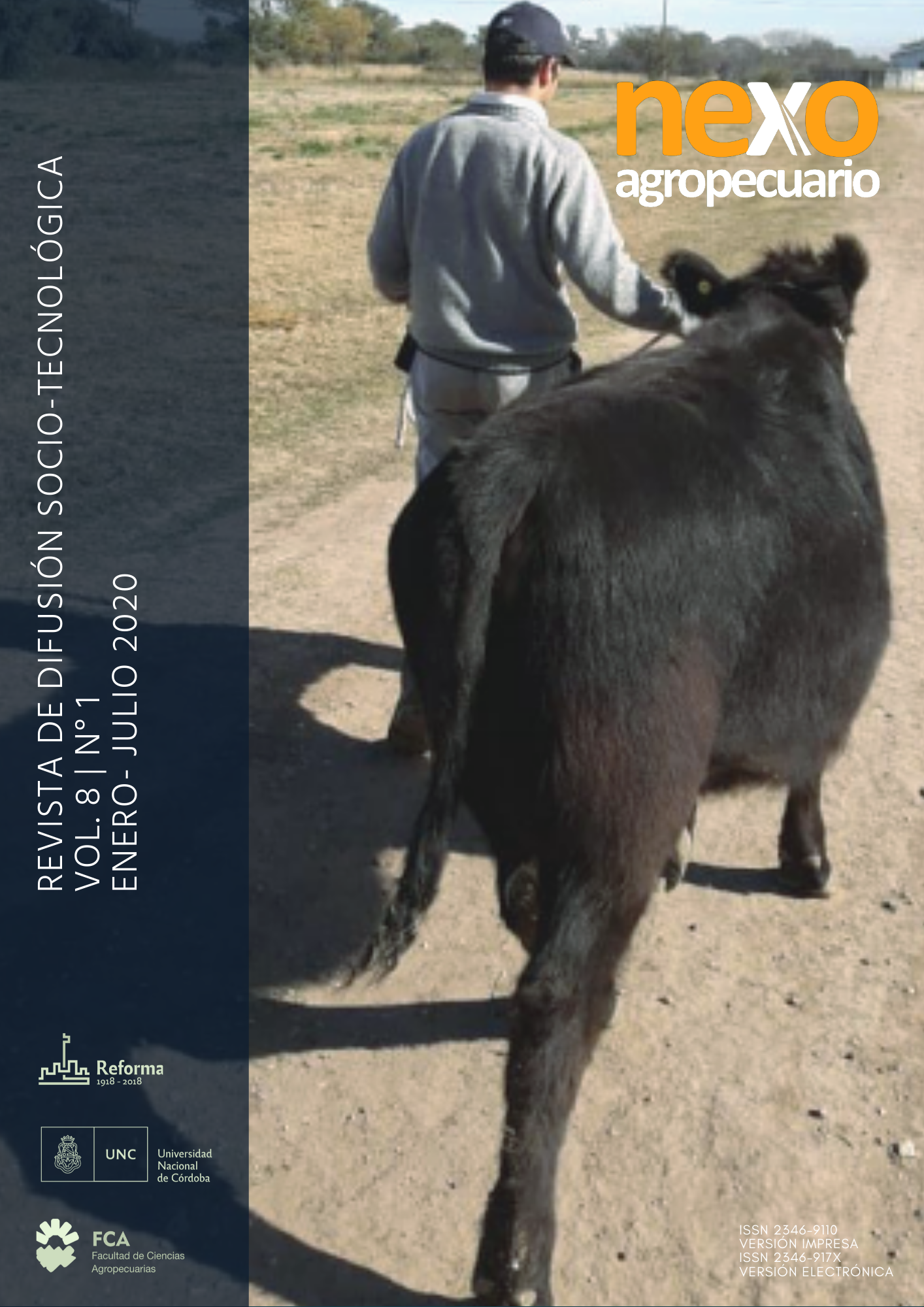Evaluation of the law of the minimum in barley (Hordeum vulgare L.) with different nutritional solutions in the laboratory of the Technical University of Cotopaxi
Evaluation of the law of the minimum in barley (Hordeum vulgare L.) with different nutritional solutions in the laboratory of the Technical University of Cotopaxi
Keywords:
Law of the minimum, barley, nutritional solutions, treatment.Abstract
The objetive of this research is to evaluate the best treatment applying the law of the minimum in barley (Hordeum vulgare L.) with different nutritional solutions. The experiment was carried out inside the laboratory of the Technical University of Cotopaxi. The study factors were: barley + without ammonium sulfate, barley + without mono potassium phosphate, barley + without two phosphates, barley + without nutrients, barley + with nutrients, plus the control. The data were taken at 7 days the germination percentage, at 12 days what is fresh matter weight and dry matter weight, with five treatments and ten experimental units per treatment, the completely randomized design (DCA) was used in the evaluation of the law of the minimum in barley (Hordeum vulgare L.). The results show that the nutrient solution used without mono potassium phosphate and without nutrients allowed to obtain better results while in the other treatments they obtained lower results in the variables: percentage germination, weight of fresh matter, weight of dry matter.
References
Andrade, M., & Martínez, E. (2014). Fertilidad del Suelo y Parámetros que la Defienden.Universidad de la Rioja.Agricultura y Alimentación. .
Barragan, R. (1978). Estudio de adaptación de veinte variedades de cebada maltera (Hordeum distichum L. y Hordeum vulgare L.) en nueve localidades de la zona del Ecuador.
Beltrán, A. (2006). Fertilización Nitrogendada. Informaciones Técnicas.Direccion General de Desarrollo Rural.Centro de transferencia Agroalimentaria. Aragón : ISSN 1137/1730.
Bonadeo, E., & Moreno, I. (2017). El Sistema Suelo y Planta.Universidad Nacional del Rio. Argentina: ISBN 978-987-688-204-0 .
Campaña, D., & Noroña, J. (2018). Estudio comparativo de 80 líneas de cebada (hordeum vulgare L.) en el Callejón Interandino del Ecuador.
Castañeda, M. (2009). Rendimiento y Calidad de la Semilla de Cebada ( Hordeum vulgare L) Venezuela. INTERCIENCIA, 8.
Castro, A., & Hoffman, E. (2011). Limitaciones para la Productividad de trigo y cebada.Departamento de Publicaciones de la Facultad de Agronomía.Uruguay.
Coronel, J., & Jiménez, C. (2011). Guia Práctica para los Productores de Cebada de la Sierra Sur. INIAP .Estación Experimental del Austro. Ecuador.
Esparza, D. (2017). Producción de Forraje Hidroponico en Cebada (Hordeum vulgareL) mediante la Utilización de la Ley del Mínimo.Universidad Nacional de Loja.Facultad Agropecuaria y Recursos Renovables.Ecuador.
Espinosa, J. (1993). Informaciones Agronómicas. Instituto de la Potasa yel Fosforo- INPOFOS.
Fontanetto, H., & Keller, O. (2011). Formas de Aplicación ,Dosis y Fuentes Nitrogenadas en Cebada . , Estación Experimental Agropecuaria Rafaela. INTA, 7.
Garcia, F. (2019). Manejo y ubicación del fertilizante junto a la semilla: Investigación y Educación . IMPOFOS .
Gómez, M. (2006). Evaluación de los niveles relativos de P y K en un suelo aplicando la Ley del Mínimo de Mitscherlich .
Herrera, J. (2005). Manejo de fertilidad de Suelos en Zonas Aridas Cebada (Hordeum vulgare L) Universidad de Concepción.Facultad de Agronomia. .
Lema, A., & Basantes, E. (2017). Producción de cebada ( Hordeum vulgare L.) con urea normal y polimerizada en Pintag, Quito, Ecuador. SciELO Analytics, 16.
López, L. (2018). Abonado de los Cereales de Invierno Trigo y Cebada. Guia Práctica de Fertilización Racional de Los Cultivos en España. ETSIA. Universidad de Córdoba.
Martínez, F. (2017). Sulfato de Amonio.Universidad Tecnológica Nacional. Facultad Regional Delta. 18.
Melgar, R. (2005). Aplicacion Foliar de Micro Nutrientes .
Mojica, F. (2001). Fertilidad de Suelos.Sociedad Colombiana de la Ciencia del Suelo.
Morales, M. (2005). Evaluación de la fertilidad de los suelos. Corporación Colombiana de Investigación Agropecuaria (AGROSAVIA).
Orellana, E. (2015). Rendimiento Y Calidad de la Semilla de Cebada (Hordeum vulgare L) Universidad Politécnica
Downloads
Published
Issue
Section
License
Copyright (c) 2020 ANGEL LLOMITOA, Chanaguano-Punina, B., Llomitoa- Gavilanez, N., Luna-Murillo, R.

This work is licensed under a Creative Commons Attribution-NonCommercial-ShareAlike 4.0 International License.
Attribution - Non-Commercial - Share Alike (by-nc-sa): No commercial use of the original work or any derivative works is permitted, distribution of which must be under a license equal to that governing the original work.


